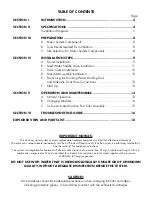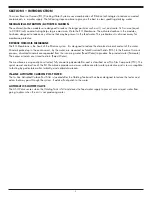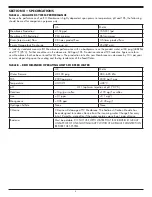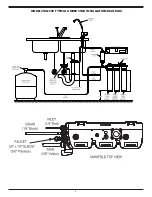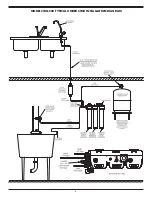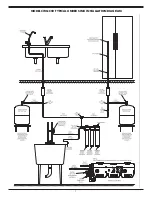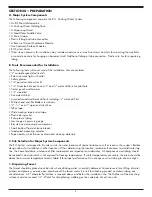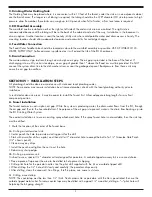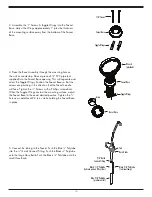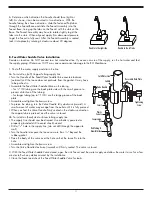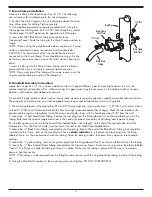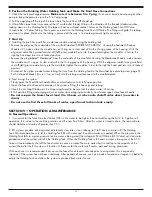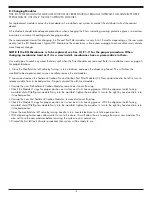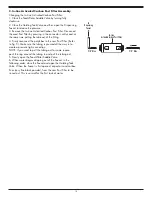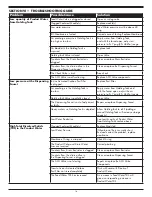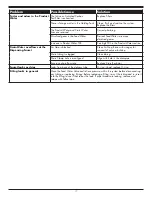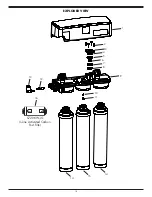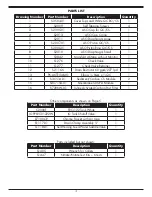
4
SECTION II
• SPECIFICATIONS
TABLE A – QUALIFIED SYSTEM PERFORMANCE
Because the performance of an RO Membrane is highly dependent upon pressure, temperature, pH and TDS, the following
should be used for comparison purposes only.
U.S.
Metric
Membrane Production
1
41-53 gpd
155-201 lpd
Membrane TDS Reduction
1
96% minimum
96% minimum
Drain (reject water) Flow
3-5 times product flow
3-5 times product flow
Empty Storage Tank Pre-charge
5-7 psig air
35-48kPa air
1: Industry standards measure RO Membranes performance with no backpressure on the product water, at 65 psig (448kPa)
and 77°F (25°C). Further conditions on the above are 600 ppm TDS. Production rate and TDS reduction figures are for a
new Membrane that has been rinsed for 24 hours. The production rate of a new Membrane can decrease by 10% per year
or more, depending upon the scaling and fouling tendencies of the Feed Water.
TABLE B – RECOMMENDED OPERATING LIMITS FOR FEED WATER
U.S.
Metric
Water Pressure
40 -100 psig
280 - 690 kPa
TDS
2000 ppm max.
2000 mg/l max.
Temperature
40-100°F
4-38°C
pH
4-11 (optimum rejection at pH 7.0-7.5)
Hardness
<10 g/g or soften
<170 mg/l or soften
Iron
<0.1 ppm
<0.1 mg/l
Manganese
<0.05 ppm
<0.05 mg/l
Hydrogen Sulfide
None
None
Chlorine
Chlorine will damage a TFC Membrane. The Sediment/Carbon Module has
been designed to reduce chlorine from the incoming water. Change filter every
6 to 12 months, more often if the water contains more than 1 ppm chlorine.
Bacteria
Must be potable. DO NOT USE WITH WATER THAT IS MICROBIOLOGICALLY
UNSAFE OR OF UNKNOWN QUALITY, WITHOUT ADEQUATE DISINFECTION
BEFORE THE SYSTEM.
Summary of Contents for CWQC50
Page 1: ...INSTALLATION OPERATION AND SERVICE MANUAL RO DRINKING WATER SYSTEM MODEL CWQC50...
Page 5: ...5 MODEL CWQC50 TYPICAL UNDER SINK INSTALLATION DIAGRAM...
Page 6: ...6 MODEL CWQC50 TYPICAL UNDER SINK INSTALLATION DIAGRAM...
Page 7: ...7 MODEL CWQC50 TYPICAL UNDER SINK INSTALLATION DIAGRAM...


